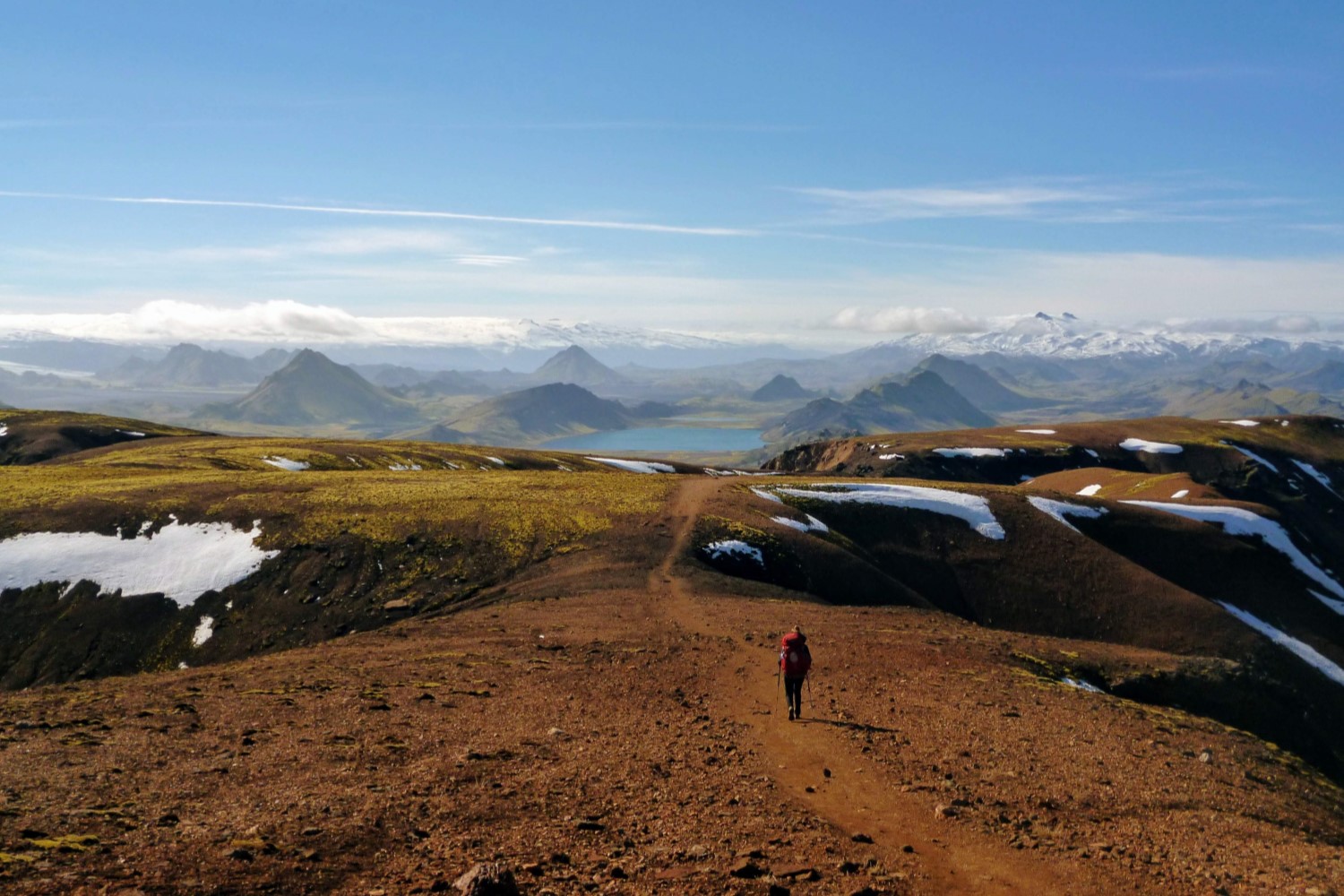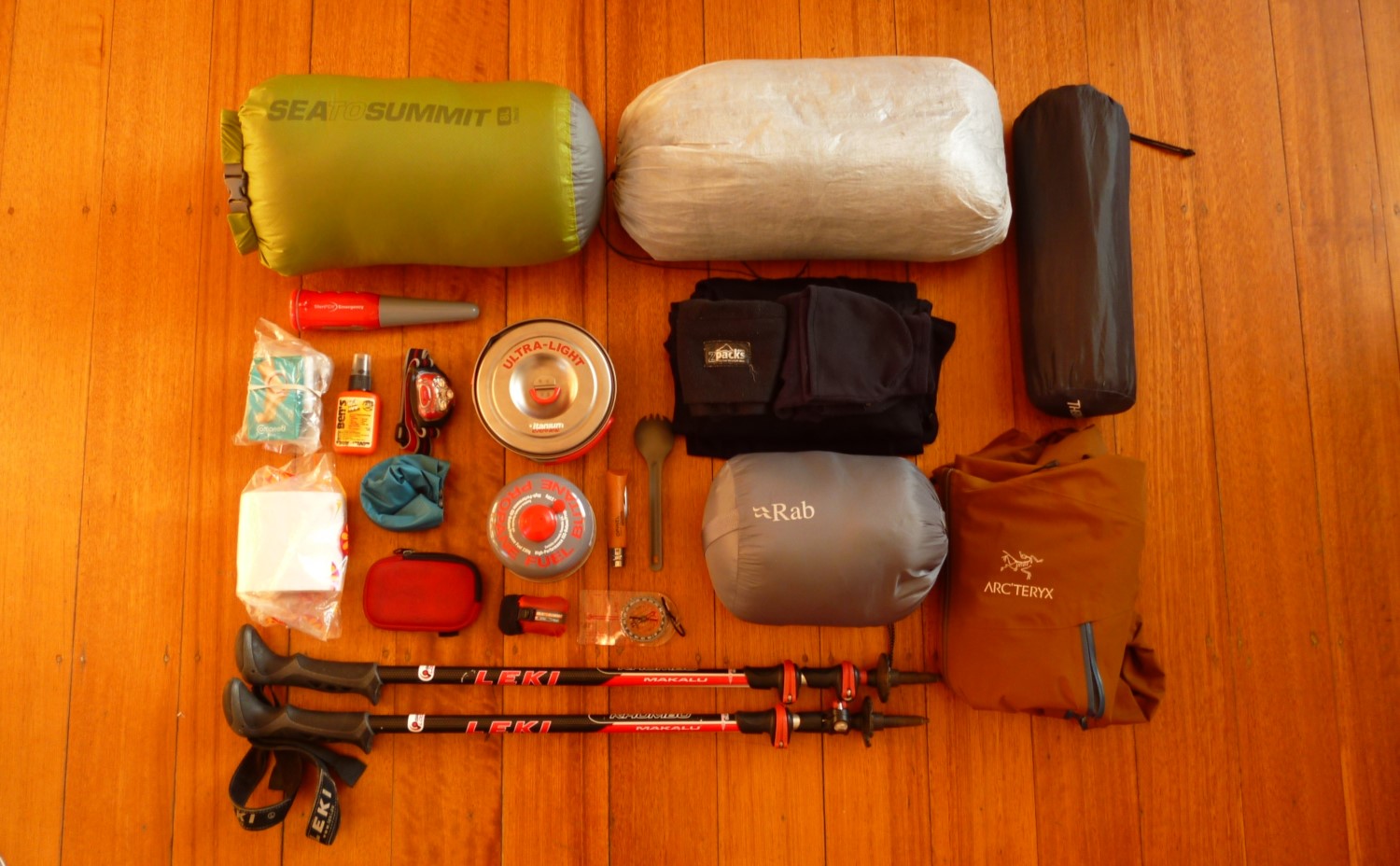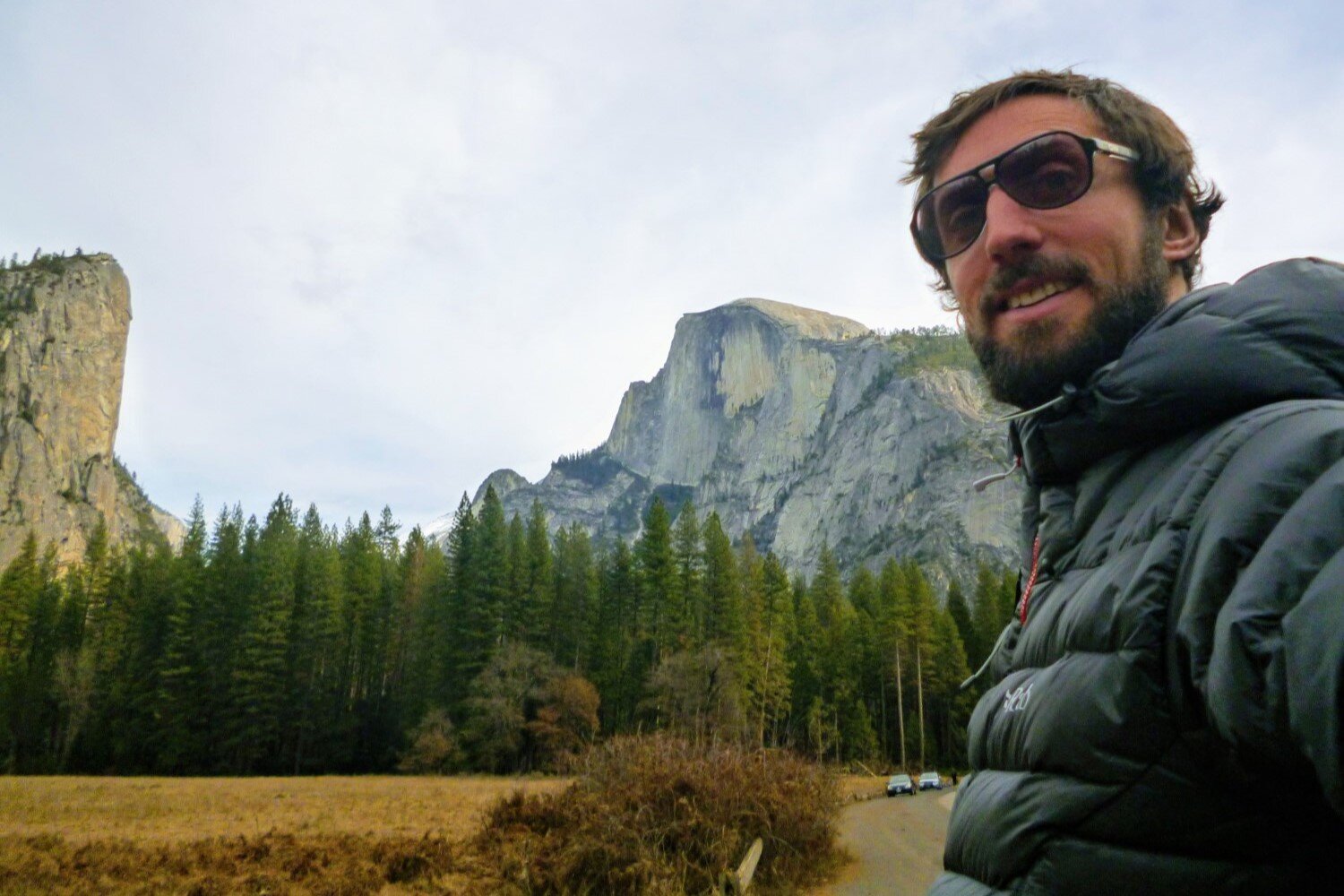Ultimate Guide To Getting Started With Fastpacking
JUMP TO: FASTPACKING VS. BACKPACKING / GEAR REQUIREMENTS / NUTRITION / APPROACHES TO FASTPACKING / PLANNING YOUR FIRST TRIP / TOP TIPS / TOP DESTINATIONS
Author: Steve Edgerton
Fastpacking combines the best elements of trail running and ultralight backpacking to facilitate nimble-footed, high mileage adventures. Fastpacking implies moving fast—a typical outing will include combining running with some good old power hiking.
One of the biggest draws of fastpacking is the ability to cover ground quickly. With the right gear, knowledge, and fitness, fastpackers can tackle four or five day bucket-list trails over a weekend, string together epic hut to hut trips in the French Alps, or even complete big thru-hikes in a fraction of the time.
At its core, fastpacking is about experiencing more with less. To run comfortably and enjoyably with a full pack, being ready with the appropriate fitness, gear, and nutrition is critical. Here is what to consider when getting ready for your first fastpacking adventure.
FASTPACKING VS BACKPACKING
On the surface, backpacking and fastpacking look like pretty much the same thing. That is because, for the most part, they are. Most of the gear is interchangeable, as are the trips and destinations.
The biggest difference is that fastpacking will incorporate running to some degree. This usually includes cruising the downhill and flat sections of trail while power hiking the climbs.
Some backpackers take issue with the whole philosophy of fastpacking. They think that running necessarily means rushing the experience. Why try to get trips done as fast as possible? Isn’t the point to savor and enjoy the experience?
We would argue that neither backpacking or fastpacking is better or superior, they are just different, and both can be enjoyed equally. Moving fast and confidently to take on a multiday hike over a weekend is its own kind of joy, just as slowing down to fully absorb a trail’s wild beauty is another. Same trails, different approaches, but both worthwhile.
Running comfortably with a pack full of gear also requires a few extra considerations that backpackers don’t need to worry about, which we cover below.
WHAT GEAR DO YOU NEED FOR FASTPACKING?
Fastpacking uses much of the same gear that ultralight backpackers will be familiar with, but with a few nuances. Here is the gear that deserves closer consideration when preparing your fastpacking kit:
BACKPACK: Arguably the most crucial piece of gear for fastpacking, your backpack should be lightweight and comfortable to run in. The best packs typically feature running hydration vest-style chest straps that distribute loads and minimize movement, with a frameless design to minimize weight.
The sweet spot for volume is 15-30 liters: smaller than 15L makes it tough to realistically pack for overnight trips. Larger than 30L makes for cumbersome, uncomfortable running. Where you are on this spectrum will depend on your climate, the length of your trip, and your preference for hot meals.
SHELTER: Fastpacking requires shelters that are ultralight and ultra-packable. This means a bivy bag, a tarp system, or a non-freestanding ultralight tent that allows for trekking poles to double as tent poles. You can check out our guide to the best ultralight tents to explore some of the best options.
SLEEP SYSTEM: Your sleep system can vary a lot depending on the season and environment in which you are fastpacking, along with your personal propensity for tolerating discomfort. For most, this typically includes a sleeping bag or quilt and a lightweight, inflatable sleeping pad.
TREKKING POLES: While not required, the vast majority of fastpackers rely on trekking poles. They can make running with a pack more efficient and can take stress of your knees on steep descents, saving your legs for many days of running. Plus, many ultralight tents are designed to utilize them as poles to help minimize your pack weight.
WATER: Fast and easy is the name of the game when it comes to filtration and hydration systems. Filter caps that are compatible with hydration vest water bottles, like the Salomon XA 42 or the Katadyn BeFree, are a popular choice. Water treatment drops are a great lightweight backup option. It’s common for fastpackers to only have 1-1.5 L of water capacity, so routes with abundant water access tend to be more popular.
FOOTWEAR: While some backpackers may prefer the support and stability offered by hiking boots, running in boots is cumbersome and can result in injury. Trail running shoes are the way to go for fastpacking. Look for shoes that feature a rock plate, are quick to drain and dry, and have a highly cushioned midsole to keep your feet fresh when stringing together multiple high mileage days.
CLOTHING: Like shoes, apparel made for trail running is well suited to fastpacking. Running shorts, socks and a t-shirt that are moisture-wicking and quick to dry are your best bet. Lightweight rain jacket and pants, a down jacket, extra socks, and base layers for sleep and lounging at camp round out the essentials for most fastpacking trips.
NUTRITION
Fueling for fastpacking adventures also combines approaches common to trail running and backpacking.
NUTRITION ON TRAIL: On the trail, calorie dense foods like energy gels, chews, and bars are great for sustaining long aerobic endurance efforts while being lightweight and packable. Salted nuts and jerky are a great option for getting some fat and protein while replenishing sodium levels.
NUTRITION AT CAMP: At camp, dehydrated backpacking meals are easy and high-calorie ways to easily refuel after a long day. Some fastpackers opt for cold soaking their meals, eliminating the need for a stove, fuel, and a kettle. This will not be for everyone, though—and the joy of a hot meal after a long day on the trail is usually more than worth the added weight.
ALWAYS DO A TEST RUN! Whatever your fueling strategy, it is wise to not try anything for the first time out in the backcountry. Try to get out on a few trail runs beforehand to see how your stomach reacts to running on different food sources. What works for one person can wreak havoc for another, so see what works for you before jumping into a big trip.
APPROACHES TO FASTPACKING
Although fastpacking is largely about getting out and adventuring in the backcountry, the emphasis on moving faster means that it naturally lends itself to more competitive endeavors. Different approaches can include:
ADVENTURE: For most fastpackers, trips look much like a typical backpacking trip, with the addition of some running. This means some higher mileage days and having a decent level of fitness, but enjoying the backcountry remains the primary objective.
FASTEST KNOWN TIMES: As trail races were cancelled en masse following the onset of the pandemic, Fastest Known Times (FKT’s) exploded in popularity. Trail runners looked to stay competitive and test their abilities by setting new FKTs on their favorite trails. Just about every popular hiking trail in the world now has an established FKT, which come in two categories: supported and unsupported.
Supported FKT’s permit runners to have partners run with them and resupply them with gear, water, and nutrition along the trail. Unsupported efforts that require multiple days are essentially competitive fastpacking. Runners must carry all their gear and nutrition. If they want shelter at night, they must carry it—no meeting crews at trailheads or road crossings along the way. Unsupported FKT’s must be completed solo.
STAGE RACES: Multi-days races, or stage races, are a terrific way for fastpackers with a competitive spirit to explore some of the most exotic routes on the planet. They offer some of the race camaraderie that FKT attempts lack while still dishing up big adventures.
For most stage races, like the iconic Marathon des Sables in the Moroccan Sahara, runners are responsible for packing and carrying all the gear and nutrition they will need, often for a week or longer. Many races supply shelter and water at the end of each stage, but some do not. Required gear lists are typically very similar to a fastpacking setup.
HOW TO PLAN YOUR FIRST FASTPACKING TRIP
So, you’ve got the gear. You’ve got the urge to go fast and far on foot. What else do you need to do to plan your first fastpacking trip?
Start by being honest with your capabilities. Don’t bite off more than you can chew as you get acquainted with your gear and the demands of running with a full pack. We recommend starting with a one or two night trip, perhaps on a trail or through terrain you are already familiar with.
A big part of fastpacking success comes from building an understanding of your fitness and accurately assessing a trail’s difficulty. When planning your daily mileage, refer to elevation profiles and topographic maps. Let the terrain and your knowledge of how many hours you can safely run in a day guide your goals. Be conservative with your estimates your first few times out.
Some questions to ask yourself when planning your route include:
What permits and reservations will you need in advance?
What kind of wildlife should you be prepared to encounter?
How and where will you be able to access water?
What are seasonal conditions like? Will additional clothing or shelter be needed?
How long are you physically capable of running with a loaded pack on consecutive days?
What are you daily caloric needs? More daily miles mean more energy expended, which means more food to pack.
OUR TOP FASTPACKING TIPS
START WITH WHAT YOU HAVE: Like most outdoor sports, the well of cool new fastpacking gear is near bottomless. It can be easy to fall in the trap of thinking you need your kit to be perfectly optimized before you get started. But if you’re already into trail running or backpacking, you probably have most of what you need!
To start, prioritize a comfortable, running-friendly backpack and good trail running shoes. Beyond that, you can always add or upgrade a few pieces of gear at a time as your fastpacking adventures progress.
MIND YOUR HYDRATION AND ELECTROLYTES: Along with drinking more water than you might on a backpacking trip, you will need to up your electrolyte intake as well. Drink mixes, tablets, or electrolyte capsules can help you stay hydrated, especially in hot, sunny conditions.
PRACTICE WITH YOUR POLES: Running effectively with trekking poles can feel a bit awkward at first. Take your poles out for a few practice runs to get a handle on the technique before setting out on overnighters.
PACK LIGHT: For fastpacking to actually be fun, you need to be ruthless with what you pack. Take what you need to stay safe and relatively comfortable, but beyond that, prioritize the joy that comes from moving fast and light through amazing landscapes.
PICK THE RIGHT PARTNER: Fastpacking can be demanding, physically and mentally. Heading out with partners you don’t jive with – on top of those demands – can make or break the experience. It is helpful to set expectations around pace and objectives before the trip to ensure everyone is on the same page.
OUR TOP FASTPACKING DESTINATIONS
Any great backpacking trail doubles as a great fastpacking trail, they just take less time to complete! However, there are a few longer routes that are quickly being established as fastpacking classics:
TAHOE RIM TRAIL: The 165 mile circumnavigation of Lake Tahoe, on the border of California and Nevada, was made to be fastpacked. Lots of runnable trail in the alpine and multiple options for resupplying in towns along the lake keeps the running fun and backpacks light.
JOHN MUIR TRAIL: This iconic 210 mile trail through the Sierra Nevada in California is often hiked over two or three weeks. Fastpackers can take it on in seven to 10 days. The trail is wildly popular though—you will need to win the permit lottery to do it.
GRAND CANYON RIM-TO-RIM-TO-RIM: A double crossing of the Grand Canyon, or the R2R2R route, is a bucket-list trip for many trail runners. At 50 miles, it can be done in a single (very long) day, but it also makes for an excellent two or three day fastpacking adventure.
TRAIL DU MONT BLANC: Three countries. 110 miles. The location of the most iconic trail race in the world. The Trail du Mont Blanc is the penultimate European fastpacking experience. It can be done hut-style, staying in the famed “refugios” along the trail, making it easy to pack light and explore the best of the French, Swiss, and Italian Alps.
KUNGSLEDEN: Traversing one of the largest wilderness areas in Europe, Kungsleden (“The King’s Trail”) is the crown jewel of Swedish hiking. The trail is a burly 270 miles, but it is divided into four distinct sections that are all more than worthy destinations on their own. The trail also features nearly two dozen huts; however, more remote sections still require bringing a shelter.
For some more trip inspiration to whet your fastpacking appetite, look at our comprehensive destination guides detailing some of the best trails on the planet!
MORE INFORMATION
Looking for more information on hiking, backpacking, and trail running? Be sure to check out some of our other tips and gear reviews:
Or check out our entire Gear Reviews Page, our Knowledge Base Articles, or Destination Guides for more hiking, backpacking, and outdoors related content.
Happy fastpacking and take care out there in the wild!





















